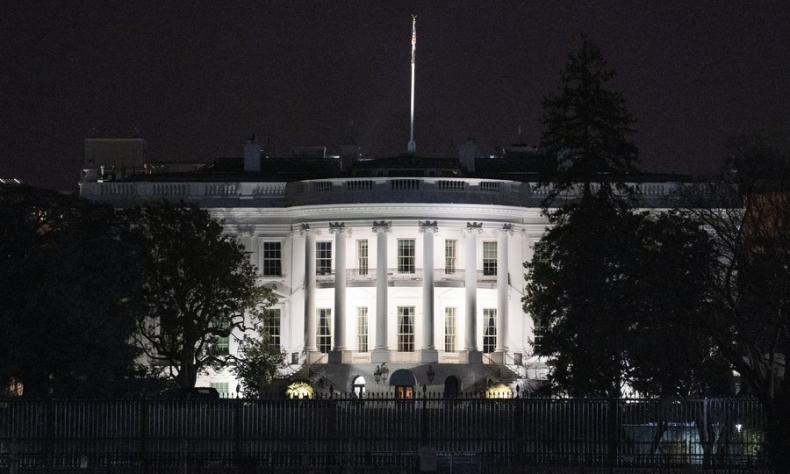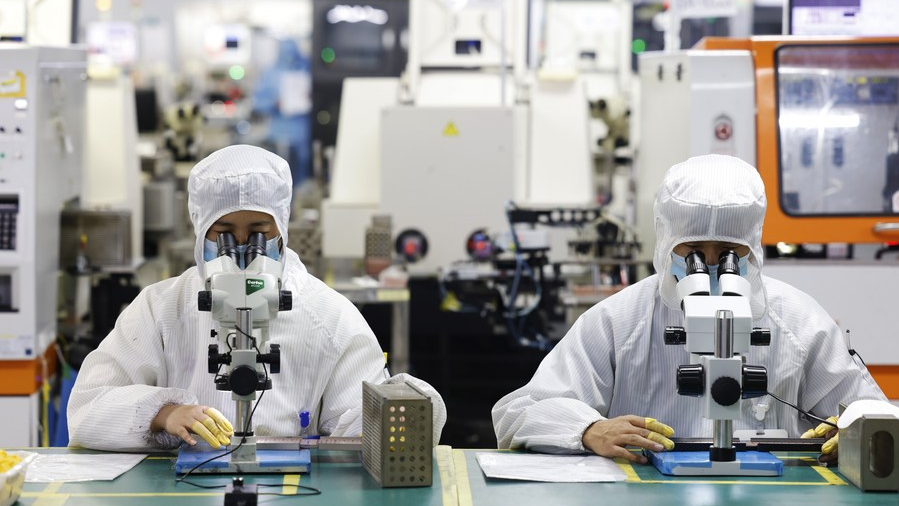Cooperation or Competition?

What the U.S. really needs is to avoid being trapped in a game of out-competing China. The gist of China-U.S. relations is not about being the winner, but about being the one who can really lead global progress.
U.S. President Joe Biden recently delivered his second State of the Union (SOTU) address to Congress after taking office in January 2021. During the February 7 speech, he said the U.S. seeks “competition, not conflict” with China, but also stressed that “winning the competition with China should unite all of us.”
This address was the first of its kind before a divided Congress, with Republicans taking control of the House of Representatives after last year’s midterm elections and Democrats still running the Senate. The Biden administration may meet opposition and resistance on major domestic issues, but U.S. foreign policy is an area less affected by political discord—on U.S. policy toward China, the two parties now have found more common ground.
Some of Biden’s remarks during the address may further drive the direction of future China-U.S. relations.
Competition vs. conflict
In recent years, the U.S. has constantly played up the “China threat” narrative. A recent example is the so-called “surveillance balloon” hyped by the Biden administration. The unintended entry of the Chinese civilian unmanned airship into U.S. airspace was due to force majeure. But the U.S. shot down the civilian airship that was about to leave the country, which was obviously an overreaction, and seriously violated the spirit of international law and practice.
By treating such an ordinary technical incident as a major “threat,” Washington is actually defining China-U.S. relations by “strategic competition,” which will only escalate tensions and may potentially lead to conflict between the world’s two largest economies.
On the economic front, the U.S. is trying to decouple from China in the hi-tech sector. Last October, the Biden administration announced new restrictions on exports of semiconductor chips to China. Some observers even compared this to the U.S. oil sanctions against Japan which triggered the Pacific War in 1941, saying that the measures could be a prelude to a possible war.
China and the U.S. should have equal access to, and compete appropriately in, the broad international market. Over 20 years ago, China revised its domestic laws, so as to comply with the rules of the World Trade Organization (WTO) and embrace the international market.

However, the U.S. is encouraging domestic semiconductor companies to reshore their manufacturing operations. The country that most criticized developing countries for their adoption of such policies is the U.S. itself. It had accused those countries of distorting the economy, blocking free trade and going against the principles of free competition. But now, to out-compete China, the U.S. has initiated industrial policies to maintain its technological hegemony. This is not only inconsistent with WTO rules regarding developed economies, but also betrays the broad commitments the U.S. has made to the international community. At the same time, history is littered with conflicts caused by protectionism.
Biden’s definition of “competition” pits China against the U.S. and its allies. Countries in the American circle of friends will need to either choose to compete with China alongside the U.S. or be forced to give up being allies—a move that could further divide the world.
Nowadays, the U.S. is at odds with its allies on several issues. European Union countries, for example, are rattled by the U.S. Inflation Reduction Act of 2022. Under the bill, the U.S. is offering a wide range of tax breaks and subsidies to companies investing in clean and green products. But in the eyes of Europeans, the act actually encourages overseas companies to move their production to the U.S., which in essence is going to put European manufacturers at a disadvantage as well as enhance the competitiveness of U.S. companies.
After the outbreak of the Russia-Ukraine conflict, countries in Europe face more daunting issues in improving their business environment and so for them, top priority should go to dealing with the conflict and maintaining regional security and stability. The U.S., on the other hand, is still trying by every means to draw them into the competition with China—the biggest challenge in the eyes of the U.S.
The right path
Among the many challenges facing his country, Biden listed the decline of the middle class and the shift of manufacturing jobs overseas. Studies by economists showed that the main reason behind the decline of U.S. employment is technological progress. Nevertheless, the trend is nothing new and can be traced back to the Industrial Revolution in the late 18th century. As the most economically and technologically advanced country in the world, the U.S. should be clear about this rather than blaming China for everything.
Businesses, in order to save costs and be more competitive, tend to adopt more advanced technologies and use less labor. In the second half of the 20th century, multinationals, represented by U.S. companies, began to transfer their production processes to developing countries with low labor costs.

It is inevitable that as more U.S. companies move their manufacturing operations abroad to meet fierce international competition, there will be fewer lower-end job opportunities left in the U.S. However, new jobs have also been created as the U.S. has kept design, research and development, and brand management within its domestic market. Overall, the U.S. isn’t losing jobs, but the less-skilled population is at a disadvantage.
These facts reflect the nature of the market economy, which has been credited with driving economic growth and technological progress, but has also led to winner-takes-all outcomes. What we need to pursue, therefore, is a better market economy, one that takes full account of vulnerable groups.
What the U.S. Government needs to do is to help workers who can’t adapt to technological progress become reemployed by offering them more training, instead of attempting to suppress another country’s technological progress.
Since the beginning of reform and opening up in 1978, China has achieved rapid economic growth and constantly deepened its integration with the world economy. Other countries, too, have benefited from China’s development.
The world economy has been shaped by all stakeholders, although the U.S. has played a key role. Biden’s SOTU address, in this sense, is highly misleading as winning the competition with China through protectionism risks destroying the open world economy that all countries have jointly shaped.
Some in the U.S. worry that one day, when the Chinese economy overtakes their country, it might impose a set of rules to replace those established when the U.S. was the dominant force, thereby harming U.S. interests. However, what the U.S. really needs is to avoid being trapped in a game of out-competing China. The gist of China-U.S. relations is not about being the winner, but about being the one who can really lead global progress.
If China, the largest developing country in the world, can achieve modernization and bring a prosperous life to all of its 1.4 billion people, this undertaking deserves the support of all. The U.S. should learn and adapt to live peacefully with a rising China.
The author is a researcher with the National Institute of International Strategy, the Chinese Academy of Social Sciences.
 Facebook
Facebook
 Twitter
Twitter
 Linkedin
Linkedin
 Google +
Google +










